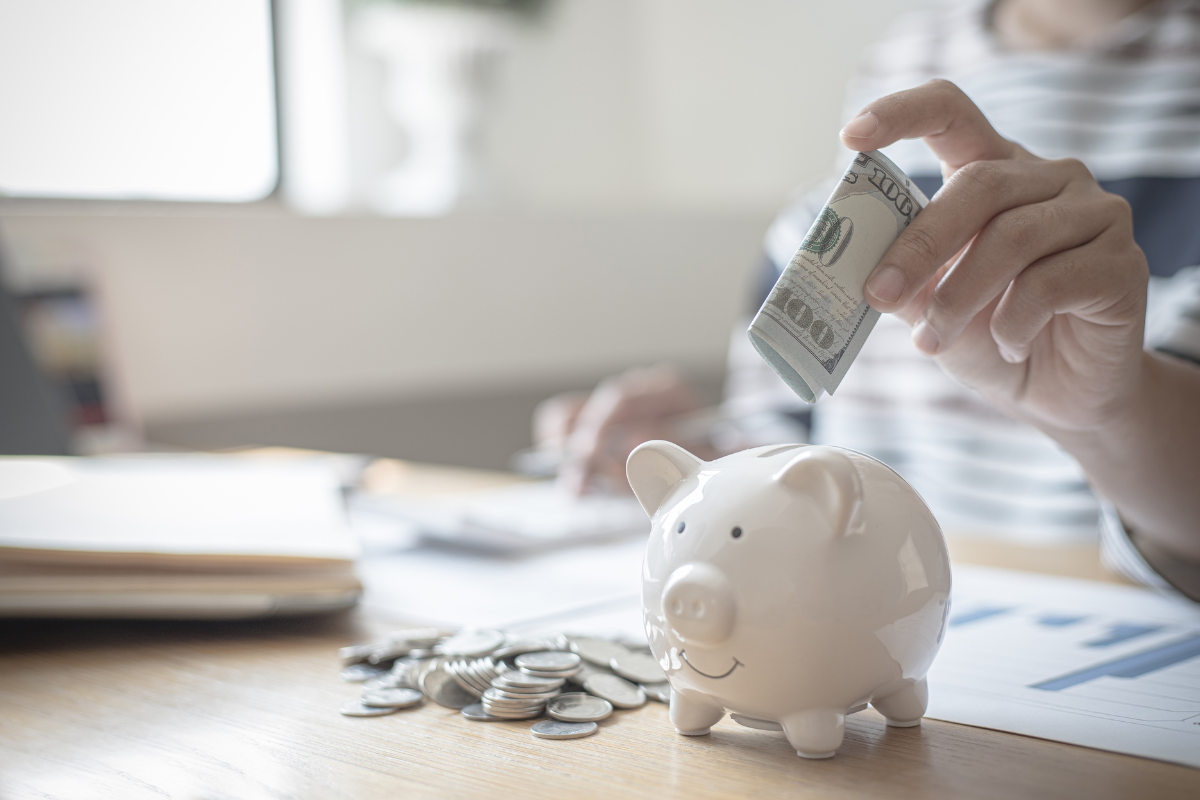Congratulations! That first paycheck landing in your bank account is a landmark moment. It signifies independence, hard work, and the start of your professional life. But with that newfound financial freedom comes a crucial question: what should you do with it? The temptation to spend it all on a fancy meal or a new gadget is strong, but a smarter approach now can set you up for a lifetime of financial security. This guide is for every young professional in Singapore, aiming to demystify the process of saving and investing from your very first salary, tailored specifically for our local context.
Singapore is an expensive place to live, and your financial journey will be a marathon, not a sprint. The decisions you make with your first few paychecks will lay the foundation for your future, whether that’s buying your first HDB flat, building a retirement nest egg, or simply having the peace of mind that comes with a robust emergency fund. So, let’s dive into a practical, step-by-step guide to help you make the most of your hard-earned money.
Setting a Savings Percentage: Your Financial GPS
Before you can figure out where your money should go, you need to decide how much of it to keep. The golden rule often cited is to save at least 20% of your take-home pay. However, this is a benchmark, not a rigid law. Your ideal savings rate should be a personalised decision based on your unique circumstances.
Are you still living with your parents, allowing you to save a larger portion of your income? Or are you paying rent, servicing a student loan, and contributing to household expenses?
- Higher Savings Rate (30–50%): If you have minimal expenses—perhaps you’re living at home and your parents cover most of your bills—aim for a higher savings rate. This period is a golden window to accelerate your financial goals, like building an emergency fund or saving for a down payment on a car or home.
- Lower Savings Rate (10–20%): If your expenses are high, for example, you have a significant student loan repayment, rent to pay, or a family to support, a 10–15% savings rate might be more realistic. The key isn’t the percentage itself, but the consistency. The goal is to start a saving habit you can maintain, no matter the amount. As your income grows and expenses change, you can gradually increase this percentage.
Understanding CPF Contributions: Not Just Another Savings Account
A significant portion of your salary is automatically channelled into your Central Provident Fund (CPF) accounts. For many young Singaporeans, this can be a bit confusing. It’s important to understand that your CPF contributions are not part of your cash savings. While they are a form of forced savings for retirement, housing, and healthcare, you cannot withdraw this money for a holiday or an emergency.
As a Singaporean citizen or Permanent Resident under the age of 55, a percentage of your monthly salary goes into your three CPF accounts:
- Ordinary Account (OA): Primarily for housing and education.
- Special Account (SA): For retirement and retirement-related investments.
- Medisave Account (MA): For healthcare expenses and health insurance premiums.
These contributions are a crucial part of your long-term financial plan, but they don’t replace the need for an accessible, liquid cash savings account.
The All-Important Emergency Fund: Your Financial Safety Net
The very first destination for your savings should be an emergency fund. This is non-negotiable. An emergency fund is a stash of cash you can easily access in the event of an unexpected crisis, such as a sudden job loss, a medical emergency, or a major home repair. The goal is to have enough to cover three to six months of your total expenses.
Let’s do some quick maths. If your monthly expenses (rent, transport, food, bills, etc.) add up to S2,000,youremergencyfundgoalshouldbebetweenS6,000 and S$12,000.
Where to Park Your Emergency Fund
Your emergency fund needs to be both safe and accessible. This isn’t the money you should be investing in risky stocks. Instead, look for options that offer a good balance of liquidity and returns.
- High-Yield Savings Accounts: Accounts like the DBS Multiplier, OCBC 360, or UOB One offer higher interest rates on your savings, provided you meet certain criteria (e.g., crediting your salary, spending on their credit card). These are excellent places to store your emergency cash.
- Singapore Savings Bonds (SSBs): While not as liquid as a savings account, SSBs are a fantastic, low-risk option. They are backed by the Singapore Government and you can redeem them at any time without penalty, receiving your principal and accrued interest in the following month.
Short-Term Goals: Saving for Life’s Little Luxuries
Once you’ve started building your emergency fund, you can begin to allocate a portion of your savings towards short-term goals. These are the things that make life enjoyable—that dream holiday to Japan, a new laptop, or a professional development course to boost your career.
These goals are typically within a 1-5 year timeframe. Because of this relatively short horizon, it’s best to keep this money in a safe, accessible place like a high-yield savings account. Investing this money in volatile assets could mean that when you need the cash, the value of your investment might be down.
Long-Term Investments: Making Your Money Work for You
This is where you move from just saving to actively building wealth. While your CPF is working in the background for your retirement, you should also be building your own investment portfolio. The earlier you start, the more you benefit from the power of compound interest.
For a young investor, the goal is often to grow your capital over a long period (10+ years), so you can afford to take on a bit more risk.
- Exchange Traded Funds (ETFs): These are baskets of stocks that track an index, such as the S&P 500 or the Straits Times Index (STI). They offer instant diversification and are a great way to start investing without needing to pick individual stocks. You can easily buy ETFs on the Singapore Exchange (SGX) through a brokerage account.
- Robo-Advisors: Platforms like Syfe, StashAway, and Endowus offer a simple, automated way to invest. They build and manage a diversified portfolio for you based on your risk tolerance and financial goals. They are particularly user-friendly for new investors who might feel overwhelmed by the world of finance.
- Singapore Savings Bonds (SSBs): As mentioned, these are also great for a long-term, low-risk component of your portfolio. They provide a stepping stone for new investors to get comfortable with the idea of investing before moving on to riskier assets.
Avoiding Lifestyle Inflation: The Silent Killer of Your Savings
This is a trap many young professionals fall into. As your income increases, so do your expenses. You start with a simple lunch, and before you know it, you’re eating at expensive cafes every day. You start by taking public transport, and then you start taking Grab everywhere.
The key is to consciously resist the urge to spend everything you earn. Your savings rate should be a constant, non-negotiable part of your financial plan, not something you do with whatever is left over. When you get a pay rise or a bonus, consider increasing your savings and investment contributions first, before upgrading your lifestyle.
Budgeting Frameworks: The 50/30/20 Rule for Singapore
A simple and effective way to manage your money is by using a budgeting framework. The 50/30/20 rule is an excellent starting point, which allocates your take-home pay as follows:
- 50% on Needs: Essential expenses like rent, utilities, groceries, transport, and phone bills.
- 30% on Wants: Discretionary spending such as dining out, entertainment, shopping, and holidays.
- 20% on Savings and Investments: This is your non-negotiable portion for your emergency fund, short-term goals, and long-term investments.
This rule provides a clear structure, but feel free to adjust the percentages to fit your unique situation. Maybe you’re aiming to save more aggressively, so you might go for a 50/20/30 split, where 30% goes to savings.
Real-Life Example: A Fresh Graduate’s Breakdown
Let’s bring this all together with a hypothetical example. Meet Sarah, a fresh graduate in Singapore earning a starting salary of S$3,800 a month.
- Take-Home Pay (after CPF): Approximately S$3,000.
- Applying the 50/30/20 Rule:
- Needs (S$1,500): S800forrent(sharingaflat),S400 for groceries and food, S150fortransport,S150 for bills and phone.
- Wants (S$900): S400fordiningoutandsocialising,S200 for shopping, S$300 for hobbies and travel.
- Savings & Investments (S$600): This is her monthly savings.
Where Sarah’s Savings Go:
- Emergency Fund: For the first 10-15 months, Sarah dedicates the entire S600tobuildingheremergencyfund.HermonthlyexpensesareS1,500, so her goal is S$9,000 (6 months of expenses). After about 15 months, her fund is fully built.
- Post-Emergency Fund: Now that her safety net is in place, she diversifies her S$600 monthly savings:
- S$200 to a separate high-yield savings account for a short-term goal (e.g., a holiday fund).
- S$400 to long-term investments. She uses a robo-advisor like Syfe to invest in a diversified portfolio of ETFs.
This example shows how a consistent, structured approach can lead to significant financial progress over time.
Conclusion
Your first paycheck is an achievement to be celebrated, but it’s also a powerful tool for your future. By establishing a smart savings strategy from day one, you’re not just putting money away; you’re buying yourself financial freedom, security, and the ability to achieve your biggest life goals.
Start by setting a realistic savings percentage, prioritise building your emergency fund, and then diversify your savings towards both short-term goals and long-term wealth creation. Remember that consistency is more important than the amount. Even small, regular savings can grow into a substantial sum over time, thanks to the magic of compounding.
Taking control of your finances now gives you the power to shape your future on your own terms. So, open that savings account, set up that investment plan, and get ready for a fulfilling and financially secure journey ahead.




